What Was It Like When Starlight First Broke Through The Universe’s Neutral Atoms?
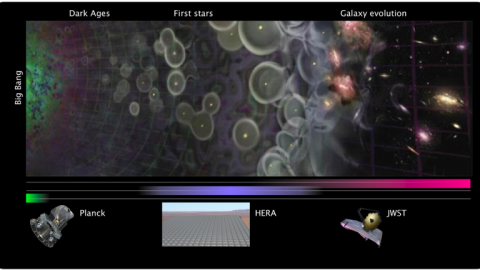
For hundreds of millions of years, most of the starlight never made it through space. Here’s how that changed.
Forming stars sounds like the easiest thing in the Universe to do. Get some mass together, give it enough time to gravitate, and watch it collapse down into small, dense clumps. If you get enough of it together under the right conditions, stars will no doubt ensue. This is how you form stars today, and it’s how we’ve formed stars all throughout our cosmic history, going back to the very first ones some 50–100 million years after the Big Bang.
But even with the first stars burning, fusing hydrogen into heavier elements and emitting tremendous amounts of light, the Universe is too good at absorbing and blocking that light. The reason? All of the atoms in the Universe are neutral, and there are simply too many of them for the starlight to penetrate. It took hundreds of millions of years for the Universe to allow the light through. It’s a vital part of the cosmic story of us that almost no one realizes.
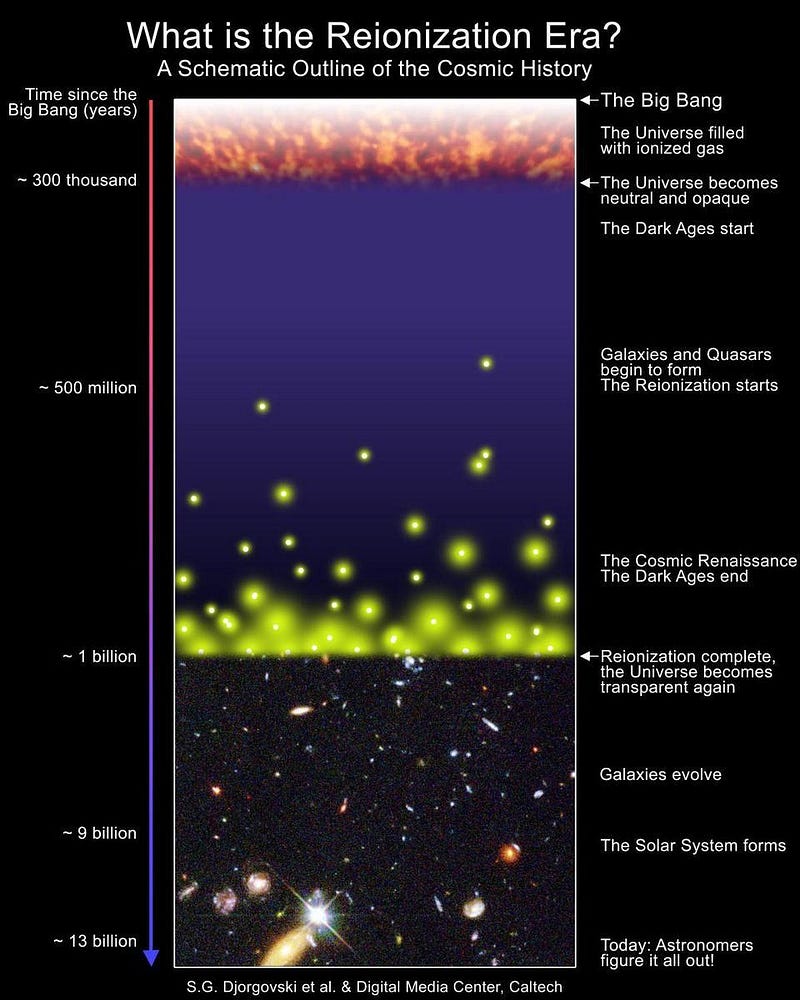
The Universe is always illuminated by the cosmic microwave background: the leftover radiation from the Big Bang itself. Less than half-a-million years after the Big Bang, neutral atoms formed and this radiation simply streamed, freely, amidst the sea of atoms. But this is only due to the fact that the cosmic radiation was much lower in energy than neutral (mostly hydrogen) atoms are capable of absorbing.
If the radiation were higher in energy, atoms would not only absorb it, they would re-scatter it in all directions, where it would be further absorbed by additional atoms. It’s only because the radiation is so low in energy — it’s primarily infrared light — that it can freely pass through space.
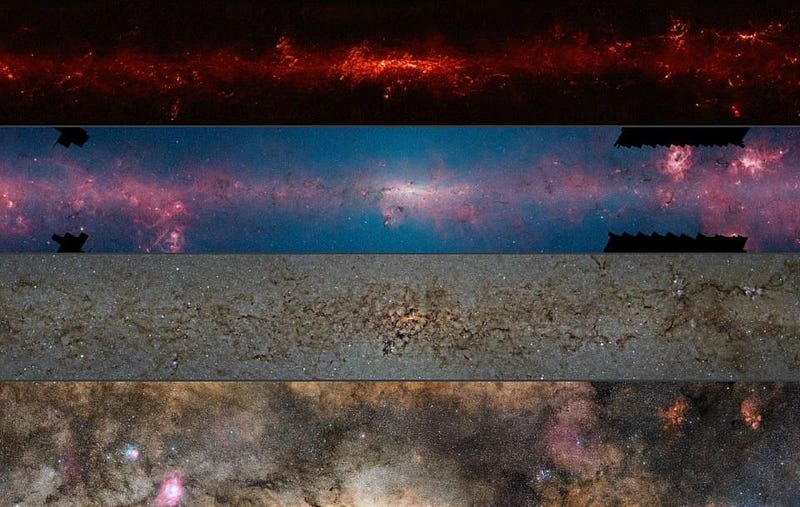
We see this even in our own galaxy: the galactic center cannot be seen in visible light. The dust and gas blocks it, but infrared light goes clear through. This explains why the cosmic microwave background doesn’t get absorbed, but starlight does.
Thankfully, the stars that we form can be massive and hot, where the most massive ones are much more luminous and hotter than even our Sun. Early stars can be tens, hundreds, or even a thousand times as massive as our own Sun, meaning they can reach surface temperatures of tens of thousands of degrees and brightnesses that are millions of times as luminous as our Sun. These behemoths are the biggest threat to the neutral atoms spread throughout the Universe.
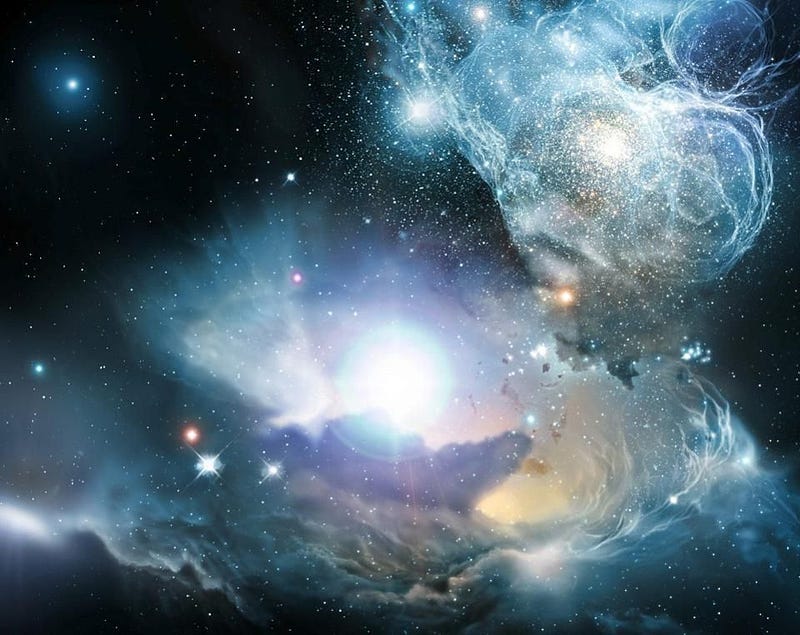
The key is that, for stars above a certain temperature, they’ll emit some fraction of their light in the ultraviolet portion of the spectrum: energetic enough to ionize a neutral atom. For a hydrogen atom in its lowest-energy state, it takes a photon of 13.6 eV (or more) to ionize it, which very few photons emitted from most stars possess. But the hotter and more massive your star is, the more ionizing photons they produce. Because these are the shortest-lived stars, it’s only within a few million years of forming a new burst of stars that you get an excessive amount of ionizing photons.
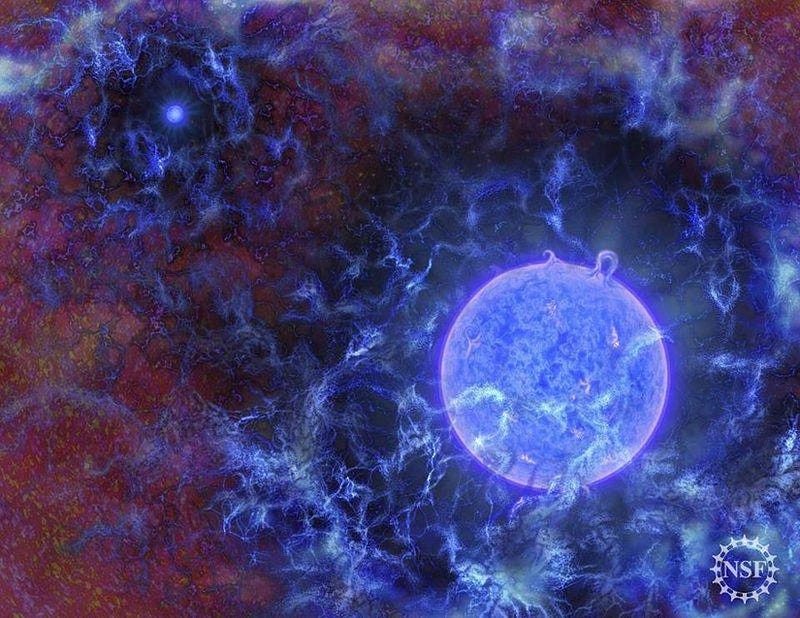
If all the atoms in the Universe were ionized, the depths of star-free space would be clear for light to travel through, meaning we could see the distant Universe without a problem. But even so long as a small percentage of the atoms remained neutral, that starlight would be effectively absorbed, making it extraordinarily challenging to detect anything from the era of the first stars and galaxies.
What we need to happen, therefore, is for enough star formation to occur that it floods the Universe with a sufficient number of ultraviolet photons to ionize enough of the neutral matter that starlight can travel unimpeded. This requires a large amount of star formation, and requires it to occur quickly enough that the ionized protons and electrons don’t find one another and recombine again.
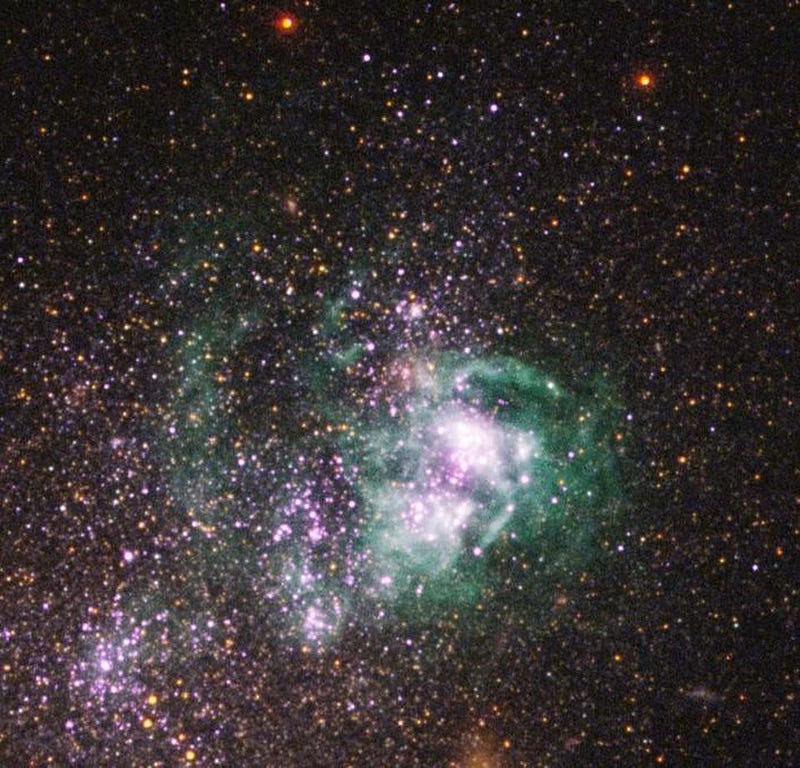
The first stars make a small dent in this, but the earliest star clusters are small and short lived. The Universe will remain largely neutral with them alone. The second generation of stars, formed in the aftermath of the first generation’s death, fare little better.
The problem is that these newly formed stars form in clumps and clusters of perhaps a few million solar masses at most. While a modern galaxy like our Milky Way might have a mass of around a trillion solar masses, filled with hundreds of billions of stars, the early star clusters only have about 0.001% of those numbers. For the first few hundred million years of our Universe, they’re barely enough to make a dent in the neutral matter throughout space.
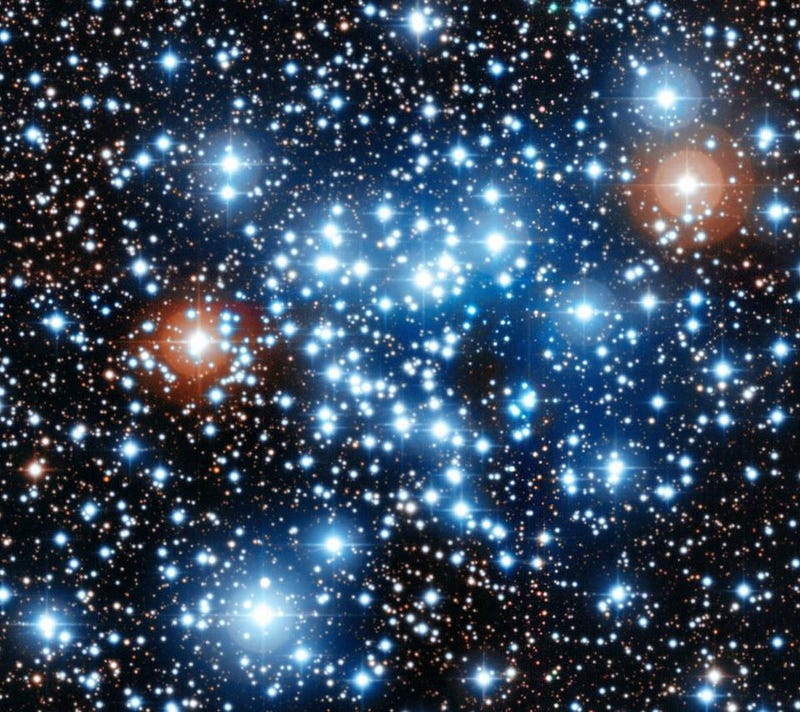
But that begins to change when star clusters merge together, forming the first galaxies. As large clumps of gas, stars, and other matter merge together, they trigger a tremendous burst of star formation, lighting up the Universe as never before. As time goes on, a slew of phenomena take place all at once:
- the regions with the largest collections of matter attract even more early stars and star clusters towards them,
- the regions that haven’t yet formed stars can begin to,
- and the regions where the first galaxies are made attract other young galaxies,
all of which serves to increase the overall star formation rate.
If we were to map out the Universe at this time, what we’d see is that the star formation rate increases at a relatively constant rate for the first few billion years of the Universe’s existence. In some favorable regions, enough of the matter gets ionized early enough that we can see through the Universe before most regions are reionized; in others, it may take as long as two or three billion years for the last neutral matter to be blown away.
If you were to map out the Universe’s neutral matter from the start of the Big Bang, you would find that it starts to transition to ionized matter in clumps, but you’d also find that it took hundreds of millions of years to mostly disappear. It does so unevenly, and preferentially along the locations of the densest parts of the cosmic web.
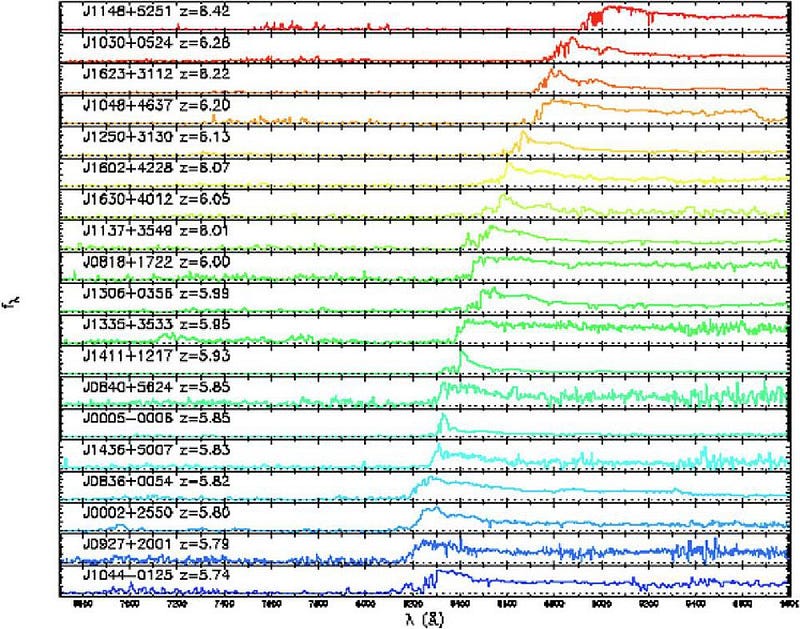
On average, it takes 550 million years from the inception of the Big Bang for the Universe to become reionized and transparent to starlight. We see this from observing ultra-distant quasars, which continue to display the absorption features that only neutral, intervening matter causes. By the same token, though, there are a few directions where the matter is reionized much earlier, indicating to us that structure formation is uneven, and giving us hopes of finding early galaxies even before that 550 million year limit.
In fact, the earliest galaxy that Hubble has uncovered, GN-z11, already comes from an earlier time than that: just 407 million years after the Big Bang.
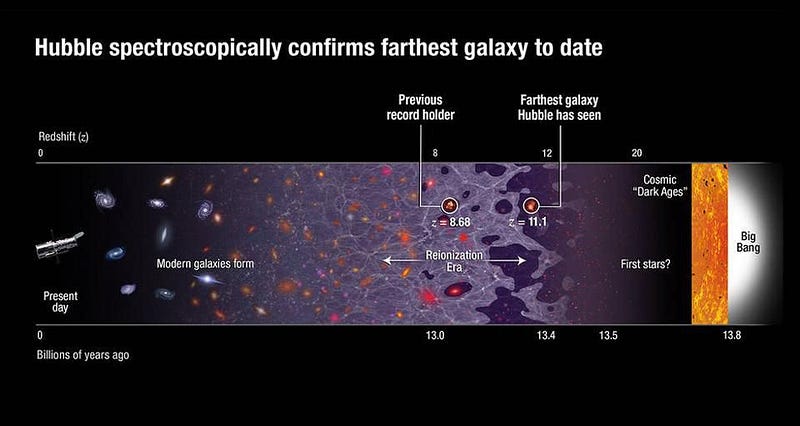
There are not yet galaxy clusters in the Universe, and the first galaxies, which largely formed between 200 and 250 million years after the Big Bang, will not be revealed in visible light. But through the eyes of an infrared observatory, where the light is long-enough in wavelength to not be absorbed by these neutral atoms, this starlight might shine through after all.
It’s no coincidence, then, that the James Webb Space Telescope was designed to look in the near-and-mid-infrared portion of the spectrum, all the way out to wavelengths of 30 microns: some 50 times as long as the longest-wavelength light that human eyes can see.
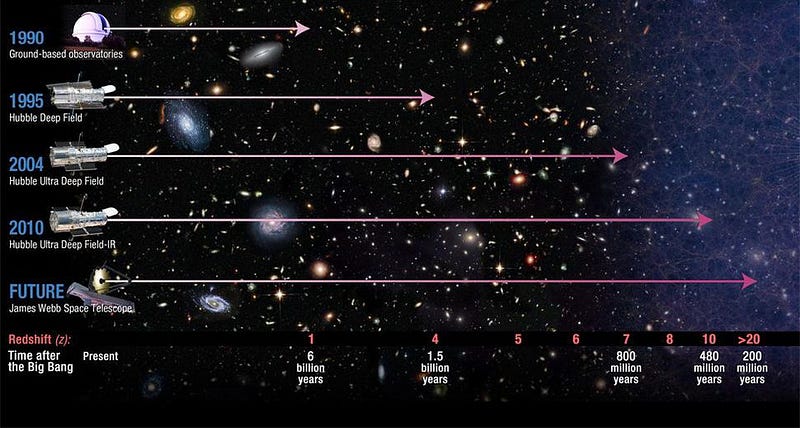
The light created in the earliest era of stars and galaxies all plays a role. The ultraviolet light works to ionize the matter around it, enabling visible light to progressively farther and farther as the ionization fraction increases. The visible light gets scattered in all directions until reionization has gotten far enough to enable our best telescopes today to see it. But the infrared light, also created by the stars, passes through even the neutral matter, giving our 2020s-era telescopes a chance to find them.
When starlight breaks through the sea of neutral atoms, even before reionization completes, it gives us a chance to detect the earliest objects we’ll ever have seen. When the James Webb Space Telescope launches, that will be the first thing we look for. The most distant reaches of the Universe are within our view. We just have to look and find out what’s truly out there.
Further reading on what the Universe was like when:
- What was it like when the Universe was inflating?
- What was it like when the Big Bang first began?
- What was it like when the Universe was at its hottest?
- What was it like when the Universe first created more matter than antimatter?
- What was it like when the Higgs gave mass to the Universe?
- What was it like when we first made protons and neutrons?
- What was it like when we lost the last of our antimatter?
- What was it like when the Universe made its first elements?
- What was it like when the Universe first made atoms?
- What was it like when there were no stars in the Universe?
- What was it like when the first stars began illuminating the Universe?
- What was it like when the first stars died?
- What was it like when the Universe made its second generation of stars?
- What was it like when the Universe made the very first galaxies?





